|
CORNWALL AT WAR MUSEUM ROYAL NAVAL AIR SERVICE FLEET AIR ARM COLLECTION (By Anne Knight)
Fairey Gannet XG831 The Davidstow Airfield and Cornwall at War Museum is dedicated to the history of RAF Davidstow Moor. It also includes other airfields in Cornwall, the Royal Navy in the county, the Army, civilian services and the Home Front. A considerable part of the museum features the Royal Navy including the Fleet Air Arm which began when the museum's owners, Steve and Sheila Perry, rescued Fairey Gannet XG831 from the breakers. The aircraft had formed part of the collection at Helston Aeropark which was situated next to RNAS Culdrose. That collection had become redundant and was gradually being disposed of. The Gannet was the last on the site and needed to be moved very quickly. Too quickly in fact for a council survey of the roads or the arranging of a police escort for a wide load. Steve and Sheila's 'never say die' attitude very quickly got together a team of volunteers and vehicles including a firm specialising in large marine haulage and the Gannet was moved to Davidstow on a bright and sunny day in February 2008. The start of the Fleet Air Arm collection! 100 YEARS OF THE ROYAL NAVAL AIR SERVICE
This picture shows Joe Mills [centre] at Charleton Hawthorne [HMS HERON II] After a failed attempt to join the Royal Navy in 1939 Joe had joined the Merchant Navy and the British Tanker Company ship BRITISH COLONIAL signing as a fireman. Whilst home on leave he again applied to join the Royal Navy and this time he was accepted because he had seagoing skills. However, seagoing skills ignored, he was sent to RAF Luton for flying training and the advanced flying course in Canada at the Royal Canadian Air Force Station at Kingston, Ontario. He was promoted to Sub- Lieutenant RNVR and after a short conversion course to Hurricanes at RAF Errol in Scotland was appointed to the Naval Air Fighter School, RNAS Yeovilton [HMS HERON]. Joe served at Charleton Hawthorne [HERON II], Dale and Ford [HMS PEREGRINE] amongst other stations. He qualified as an instructor in 1944. He was Squadron CO 762 Squadron Dale in 1945 and led the squadron's ten Oxfords from RNAS Ford into Culdrose on 14 April 1948. Joe also took part in Arctic Sea Trials aboard HMS VENGEANCE in 1949 and was subsequently with the Admiralty's Aircraft Accidents Department. The new building that Cdr Mills opened has displays from the very beginning of the service which at the outbreak of WW1 had ninety three aircraft, six airships, two balloons and seven hundred and twenty seven personnel. On 7 May 1909 the Admiralty signed a contract for No 1 Rigid Air Ship which became known as Mayfly. This was to signal Cornwall's involvement with the Royal Naval Air Service. Cornwall's position jutting out into the Atlantic with the English Channel to the south and the Bristol Channel to the north gave it strategic importance. AIRSHIPS AND BALLOONS The museum's airship exhibits have benefited from donations by RNAS historian and writer Peter London. The RNAS has had eleven bases in Cornwall, an airship sub-base at Bude, balloon stations at Falmouth and Merrifield, an airship station at Mullion, a balloon station at Newlyn, a WW2 air station at St Merryn, a combined station at Padstow, a WW2 air firing range at Treligga and a seaplane station at Tresco. There were also RNAS storage facilities at Tregantle and Withenoe. More modern Cornish RNAS stations are at Culdrose [HMS SEAHAWK] andPredannack. Nine years after it's formation in 1918 the RNAS was merged with the Royal Flying Corps to form the Royal Air Force but in 1937 the Royal Navy regained it's own air service, the Fleet Air Arm. HMS VULTURE II The two WW2 Fleet Air Arm stations in Cornwall at St Merryn and Treligga are well represented in the collection. The museum has unique wartime pictures of Treligga, known as HMS VULTURE II, which are displayed as a slide show. HMS VULTURE II operated from 1939 to 1955. It was an air to ground bombing and gunnery range and equipped with emergency landing strips in case aircraft had engine failure or received richochet damage whilst firing on the range. The entire operation at Treligga was unusually, but not uniquely, run by WRNS. Detailed maps at the museum show the airfield and the extent of the firing ranges together with some interesting correspondence from local councils on the perceived effect on local fishing and industry.
HMS VULTURE
A unique element of the St Merryn collection is the uniform of.......................... who was stationed at HMS VULTURE during WW2. Her WRNS bag also came to the museum with her uniform. Her family told us that the bag accompanied her everywhere and she always believed it got her a seat on the train or bus. When she died on a trip away from home, she had her bag with her as usual. In the bag was a Cornwall at War Museum brochure. The family believed this to be a sign that she wanted it to come to the museum and it now has pride of place beside her uniform in the FAA building. RNAS St Merryn, HMS VULTURE was opened in 1940 and operated as a fighter training school for aircraft carrier fighter/bombers. HMS VULTURE was used by many first and second line squadrons for flying, combat, armament and ground attack training. It was extended in 1942 to include the School of Air Combat and a new control tower was built in 1944. At the end of 1952 it was recommissioned as HMS CURLEW for ground training and the Fleet Air Arm Observer School. Flying ceased in December 1952 and the airfield was sold in 1956. St Merryn airfield POST WAR YEARS Immediately after WW2 the Admiralty looked briefly at RAF Davidstow Moor as a potential site for a Naval air station. Dummy Deck Landings were carried out but in the end Admiralty settled for a brand new site at Culdrose. The museum has a collection of early pictures of Culdrose, extracts from flying log books and papers recording the complaints raised in Parliament of it's building costs. Links with Culdrose today have been strengthened by the visit of Cdr Gavin Richardson who was the museum's guest of honour at the 2011 Armed Forces Day Parade. More recent history is represented in a variety of items including the personal collection of Cdr Pat Rogers RN who flew in the 1950s and 60s. There is also the nose cone of a Hawk which was lost in an air to air collision on 29 July 1983. RAF Hawk T1 XX353 of 2TWU 151 Squadron collided with RAF Hawk T1 XX336/J. Both pilots, Flt Lt Pablo Mason and Lt Cdr PS Sheppard AFC RN ejected over the sea. Cdr Peter Sheppard AFC, donated the nose cone to the museum in 2009. There are a growing number of items relating to the Hawker Hunter which are being brought together to create a new display. HMS SEAHAWK The collection also includes target drones of the Fleet Target Group based at RNAS Culdrose [HMS SEAHAWK]. The Fleet Target group moved to Culdrose and became 792 Naval Air Squadron in November 2001. This squadron had originally been formed at St Merryn [HMS VULTURE], in 1939 as an air target unit when it was equipped with six Blackburn Skuas. After being disbanded in 1945 it reformed at Culdrose in 1948 as a night fighter training unit with Fairey Fireflys and Avro Ansons. These were later replaced with Sea Hornets before the squadron was again disbanded in August 1950.
Chukar target drones in operation On display are both examples of the Chukar and the Shellduck. Both are aerial target drones produced by Northrop. They are recoverable, remote controlled and subsonic and are used primarily as a realistic aerial target.The Northrop "Shelduck" basic training drone was used internationally by the armed forces of at least 18 countries and was used as a training device for ground-to-air gunnery practice. It was also used as a training target for surface-to-air missiles such as the Seacat, Tigercat, Redeye, Blowpipe, Sparrow, Chaparral, Hawk, Sidewinder and Nike. SEAPOWER
A building dedicated to the Royal Navy at sea and to the Royal Marines has a variety of historic items from helicopter training to HMS OCEAN and Operation Taurus 2009.
Sea King Composite Main Rotor Blade THE FALKLANDS CONFLICT 1982 1982 saw a major exercise take place on RAF Davidstow Moor, a combined forces exercise in preparation for landing on the Falkland Islands. Aircraft from HMS HERMES off the coast of North Cornwall carried troops and equipment from ship to airfield. The museum has a collection of black and white pictures of this exercise and a considerable collection covering the action in the South Atlantic. A unique collection of photographs taken by Argentinian troops show another side of the conflict. These pictures are displayed on screen as a slide show with commentary by Yorkie Malone who 'yomped' across from San Carlos to Stanley with 45 Commando. Map showing routes taken by RM
Commandos
and 2 Para Part of a display of aircraft which took part in the Falklands conflict The Falklands display tries to cover action by different branches of the military from the Royal Navy and Royal Marines, the Fleet Air Arm, 2 Para to the RAF and the Avro Vulcan. Royal Navy Falklands 1982 HMS COVENTRY memorial board
Anne Knight Cornwall at War Museum March 2012 |
||||
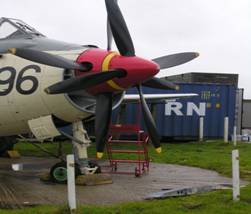
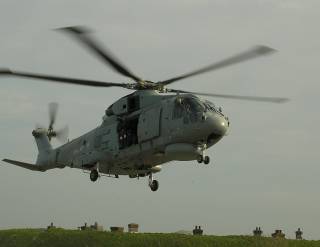 In
2009 the Royal Navy celebrated the 100th anniversary of the formation
of the Royal Naval Air Service, Great Britain's first military air service. The
museum put a small exhibition together to honour this historic event. With much
enthusiasm and generous donations from members of the public this soon outgrew
the space allocated and a dedicated building was found. The larger space enabled
room to be given to each of the RNAS Stations in Cornwall from the first pre WW1
rigid airship and balloon sites through to what today is the largest helicopter
base in Europe at Culdrose.
In
2009 the Royal Navy celebrated the 100th anniversary of the formation
of the Royal Naval Air Service, Great Britain's first military air service. The
museum put a small exhibition together to honour this historic event. With much
enthusiasm and generous donations from members of the public this soon outgrew
the space allocated and a dedicated building was found. The larger space enabled
room to be given to each of the RNAS Stations in Cornwall from the first pre WW1
rigid airship and balloon sites through to what today is the largest helicopter
base in Europe at Culdrose.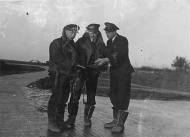
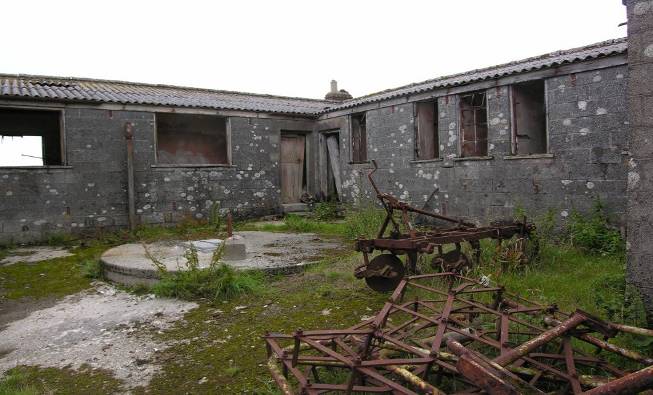
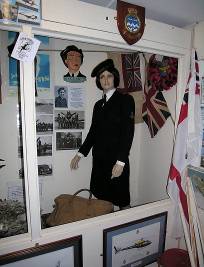 This picture
shows the WWII uniform of …......... together with her WRNS bag
This picture
shows the WWII uniform of …......... together with her WRNS bag
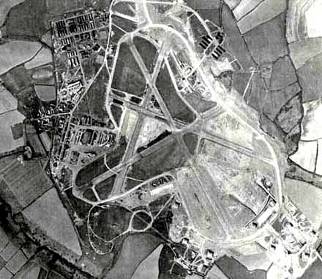
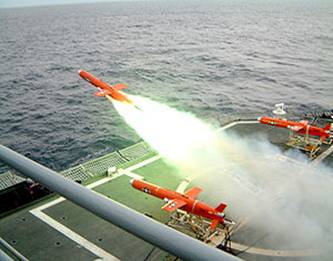
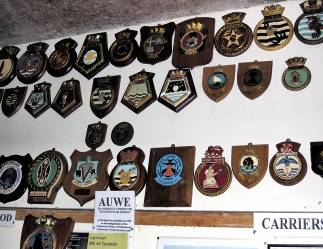 Ships crests on display in the Seapower
building
Ships crests on display in the Seapower
building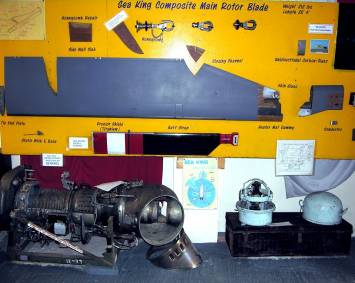
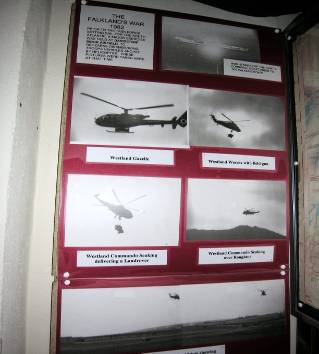

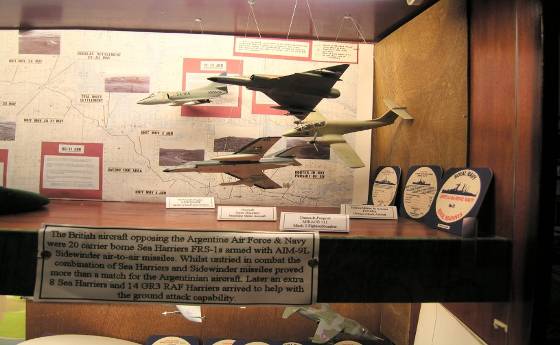

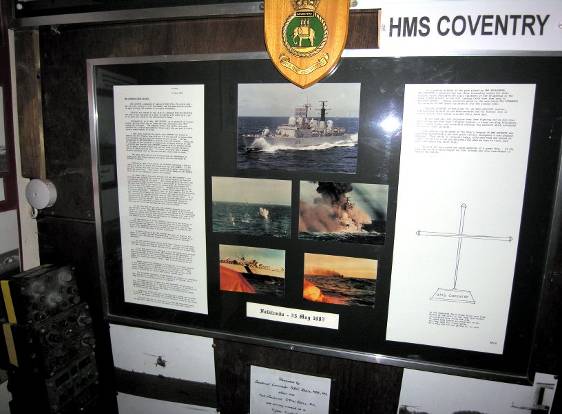
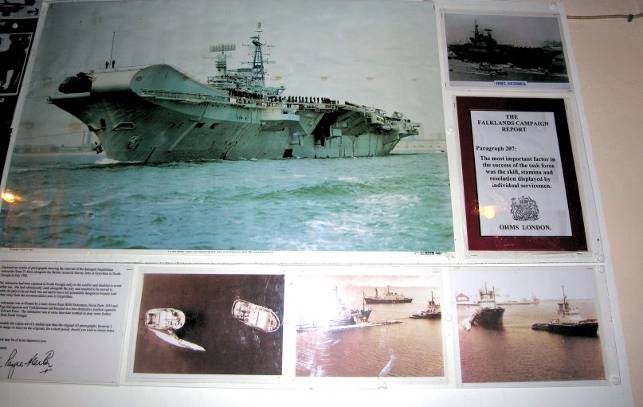 My
interest in the Royal Navy, and in particular the Fleet Air Arm stems from my
father who was a FAA pilot and flying instructor. I have very fond memories of
my childhood at Dale,and Ford. I have special memories of leaving
father's office in the corner of Horseguards. He was with the Admiralty Air
Accidents Investigation Branch and on a Saturday, when I was not at primary
school, I travelled from Sussex to London with him on the train. The arrival of
lunchtime meant a walk in Greenpark and date and banana sandwiches from a small
stall in the park. A pleasure I remember well after over 60 years! The FAA was
an extension to our family and father maintained contacts with his colleagues
and many of the men he taught to fly. And of course kept in touch with his WREN
writer until his death last year aged 96!
My
interest in the Royal Navy, and in particular the Fleet Air Arm stems from my
father who was a FAA pilot and flying instructor. I have very fond memories of
my childhood at Dale,and Ford. I have special memories of leaving
father's office in the corner of Horseguards. He was with the Admiralty Air
Accidents Investigation Branch and on a Saturday, when I was not at primary
school, I travelled from Sussex to London with him on the train. The arrival of
lunchtime meant a walk in Greenpark and date and banana sandwiches from a small
stall in the park. A pleasure I remember well after over 60 years! The FAA was
an extension to our family and father maintained contacts with his colleagues
and many of the men he taught to fly. And of course kept in touch with his WREN
writer until his death last year aged 96!